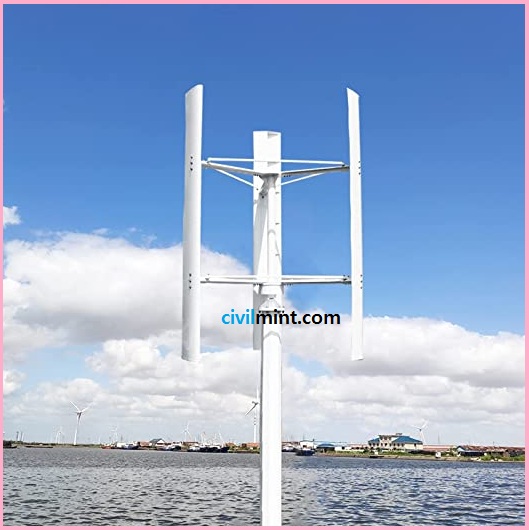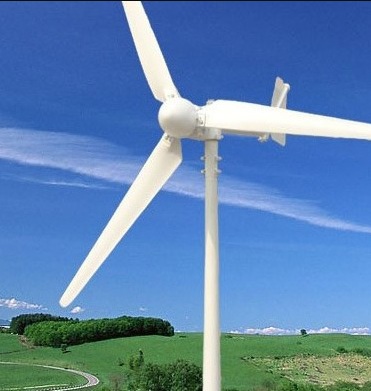There are two types of wind turbines as follows.
- Vertical Axis Wind Turbine
- Horizontal Axis Wind Turbine
1. Vertical Axis Wind Turbine
Vertical axis wind turbines are the most well-known type of wind turbine. The main shaft of the vertical axis wind turbine is fixed perpendicular to the ground. Some other key parts are placed on the bottom of the turbine. Simply put, the axis of rotation of a vertical axis wind turbine is vertical or perpendicular to the ground. The turbine does not need to be turned in the direction of the wind to operate efficiently.
Vertical axis wind turbines have great advantages in areas with large fluctuations in wind direction.
The gearbox and generator in these turbines can be located closer to the ground, driving them directly from the rotor assembly to the primary gearbox for easy maintenance. The gearboxes of vertical axis wind turbines are significantly more fatigued than those of other types of wind turbines (eg horizontal axis wind turbines). However, these turbines have the major disadvantage of producing lower average energy compared to horizontal axis wind turbines.

Vertical axis wind turbines are specifically designed to be economical, practical, efficient, and quiet. These turbines are suitable for use in residential areas.
2. Horizontal Axis Wind Turbine
A horizontal axis wind turbine is also one of the known types of wind turbines. The main shaft of a horizontal axis wind turbine is fixed horizontally to the ground, which distinguishes it from a vertical axis wind turbine. Simply put, the axis of rotation of the horizontal axis wind turbine is located in the horizontal direction with respect to the ground.
Large horizontal axis wind turbines with three blades currently generate most of the world’s wind power when the blades surround the tower. These turbine towers have generator and rotor shafts that must face in the opposite direction to the wind. Horizontal axis wind turbines are available in different sizes from 100W to 100KW. These HAWTs are usually placed in fair air conditions where constant flow and air direction allow for maximum wind power to be obtained.

Since horizontal axis wind turbines are not very efficient in areas with turbulence, they are usually deployed in areas with constant directional airflow.
